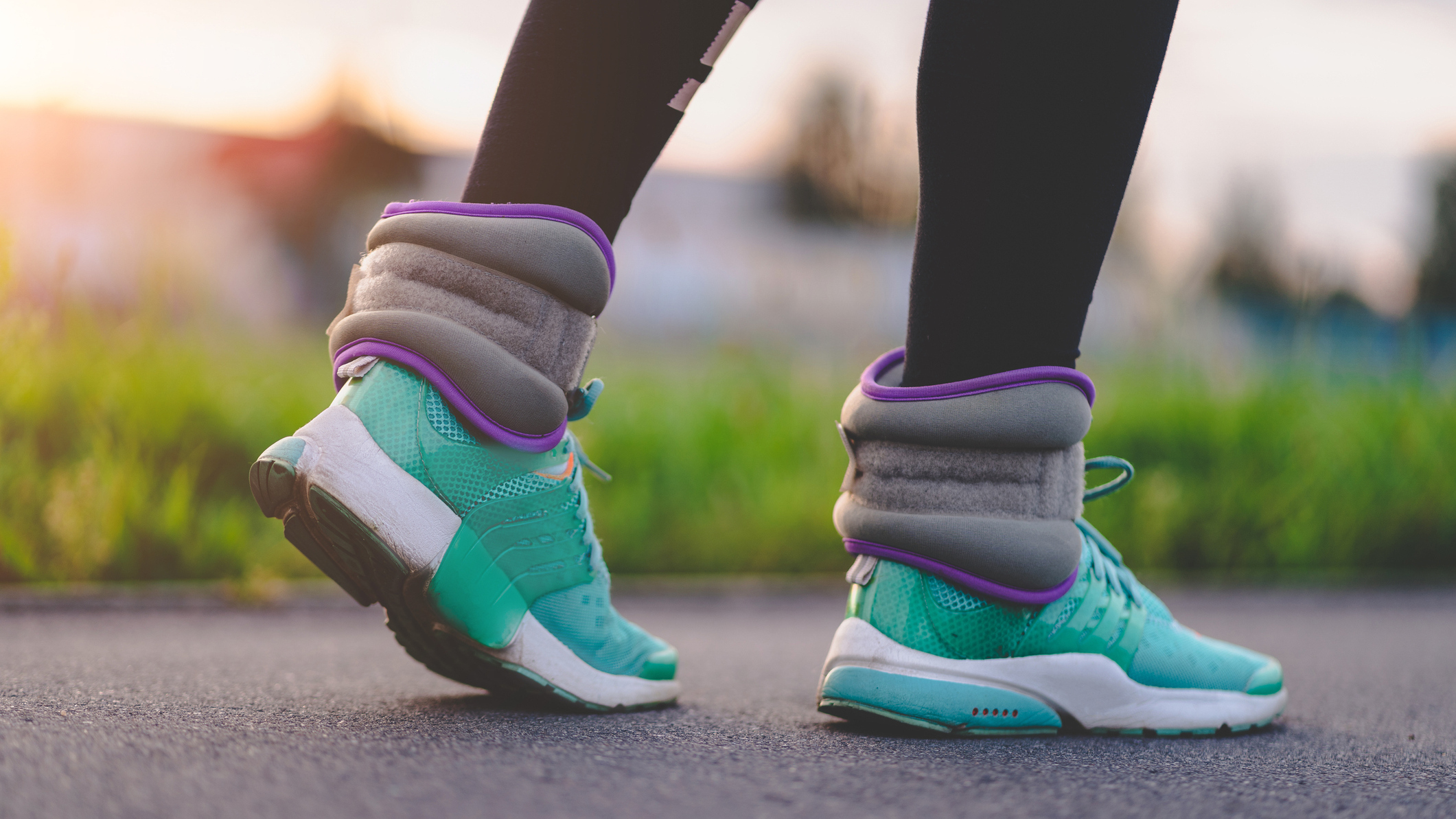Here’s one thing this walking coach says you should never do, and three alternatives to boost your calorie burn on a walk
Why wrist and ankle weights may be your worst enemy for walking workouts

There are many ways to make your walks more challenging—and I’ve tried a few myself—but according to walking coach Joyce Shulman, there’s one popular hack you should avoid at all costs.
“I am anti wrist weights and ankle weights,” says Shulman, author of 99 Walks That Will Change Your Life.
While some people recommend carrying light weights to boost intensity, Shulman says no more than a pound or two is okay, but she would still avoid them.
“The value isn’t worth the risk to your elbows and shoulders, and to mess up your gait,” says Shulman. “We have this beautiful natural gate where our arms and legs typically move in opposition to one another.”
Wrist and ankle weights, Shulman says, “throw off your natural gait and put unnecessary strain on your shoulders and knees. If you experience this, I recommend Aspercreme to help relieve the pain so you can keep you doing activities you love without pain holding you back.”
So what should we be doing instead if we want to make a walk more challenging and boost calorie burn? Shulman shares three of her tried-and-trusted ways to level up your walks.
1. Rucking
Shulman is an advocate of rucking, where you load up a rucksack and go for a walk (or run). A backpack designed for rucking will distribute weight evenly so it’s safe on your spine and you can add load progressively, minimising your risk of injury.
Start your week with achievable workout ideas, health tips and wellbeing advice in your inbox.
Shulman says this is better than just carrying dumbbells or water bottles in a rucksack or wearing a weighted vest.
“You can start really low, just add five or six pounds, and build up from there,” says Shulman.
While I wouldn’t normally encourage sinking more than $100 on a piece of fitness kit if there’s a cheaper alternative, there’s wisdom in Shulamn’s advice. I jumped straight in with a 10kg (22lb) weighted vest last year to upgrade my walks and it left me feeling burnt out in days.
2. Exercise snacking
Shulman encourages short bursts of movement—known as exercise snacking—to increase your overall daily movement.
“If you only have five minutes, take the walk,” she says. “If you are able to, add 10 squats, 10 walking lunges or 10 overhead presses to that walk—to get a little bit more intensity and benefit into that short period.”
Other simple ways you can add short bursts of walking to your day include taking the stairs instead of the elevator or getting off the bus one or two stops early.
It’s little changes like these that add up to make a difference.
3. Walking intervals
“You can add interval training to your walk by changing up your pacing,” says Shulman.
Set a timer and try power walking for one minute, then reduce the intensity to a recovery pace for the next minute or two, then increase to power walking again. Continue alternating for the time that you have. Find a rhythm that works for you.
No timer? You can use landmarks around your environment, such as trees, mailboxes or street lamps to guide your intervals without needing to bring a phone or stopwatch with you.
Intervals help to raise your heart rate, boost endurance and give you time to recover, making your walks feel more interesting.

Lou Mudge is a Health Writer at Future Plc, working across Fit&Well and Coach. She previously worked for Live Science, and regularly writes for Space.com and Pet's Radar. Based in Bath, UK, she has a passion for food, nutrition and health and is eager to demystify diet culture in order to make health and fitness accessible to everybody.
Multiple diagnoses in her early twenties sparked an interest in the gut-brain axis and the impact that diet and exercise can have on both physical and mental health. She was put on the FODMAP elimination diet during this time and learned to adapt recipes to fit these parameters, while retaining core flavors and textures, and now enjoys cooking for gut health.
